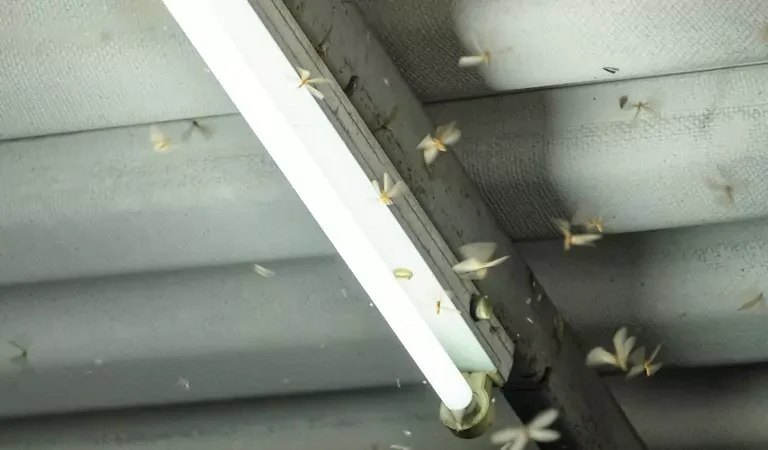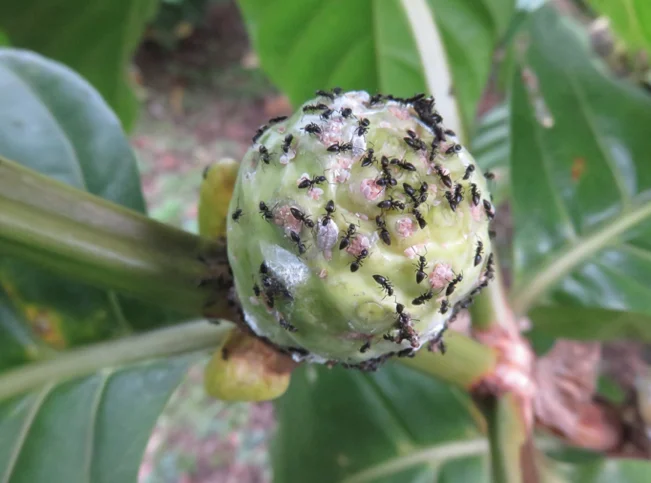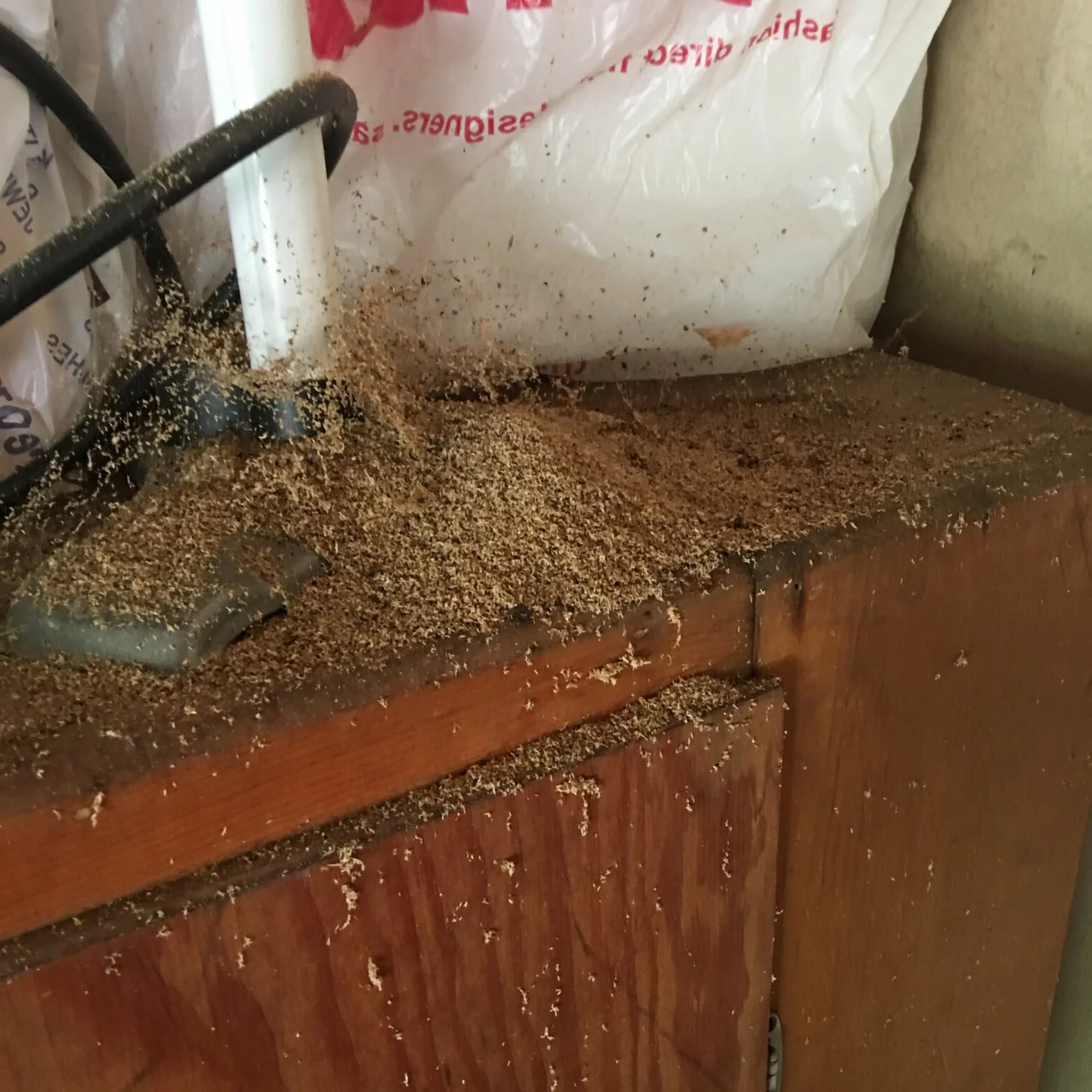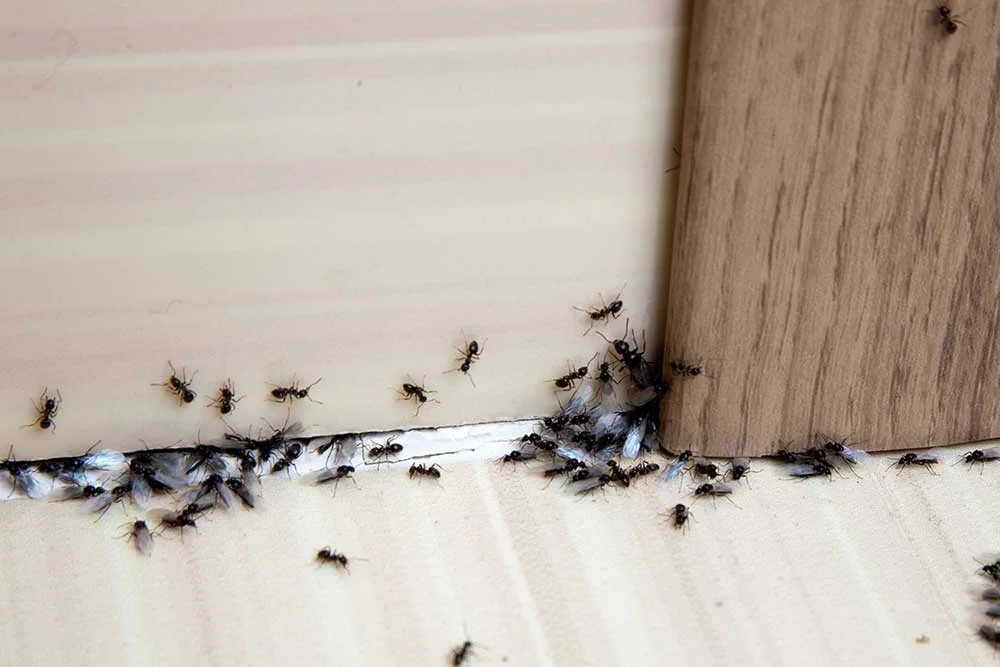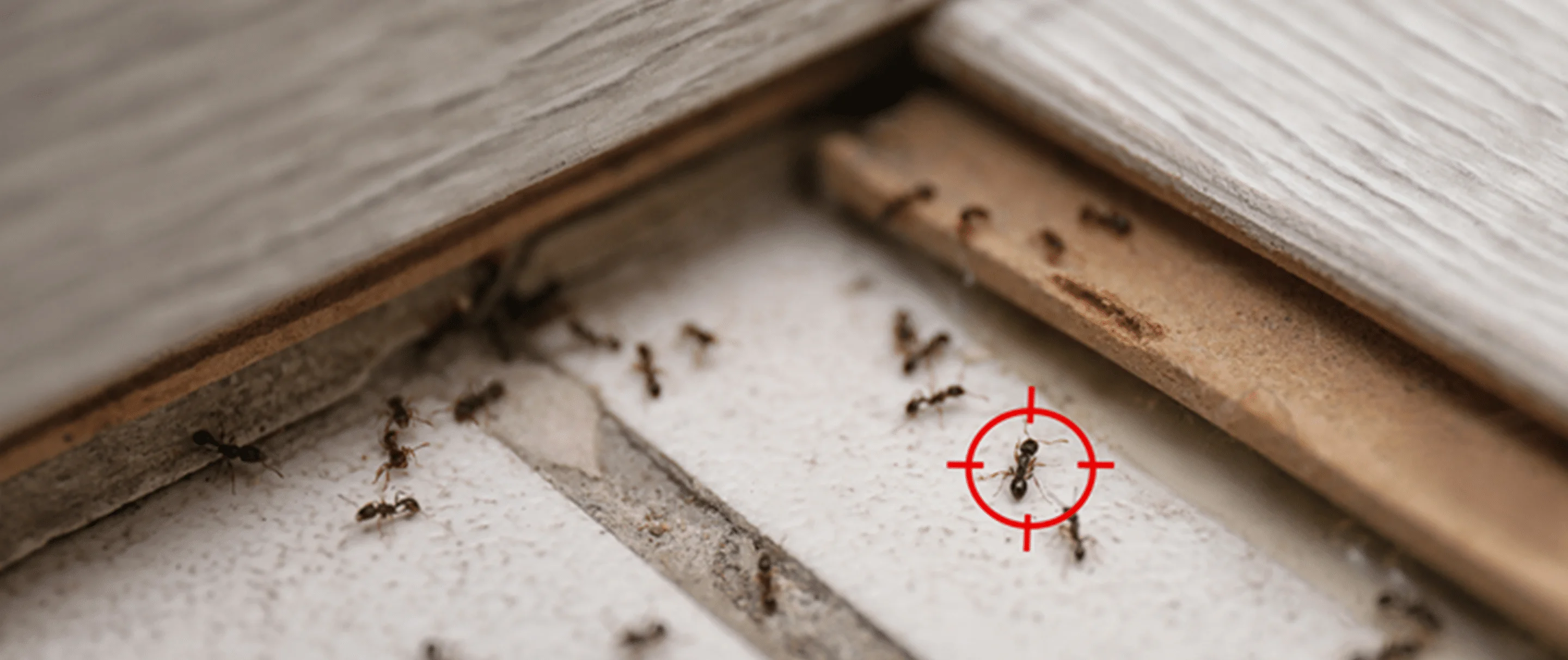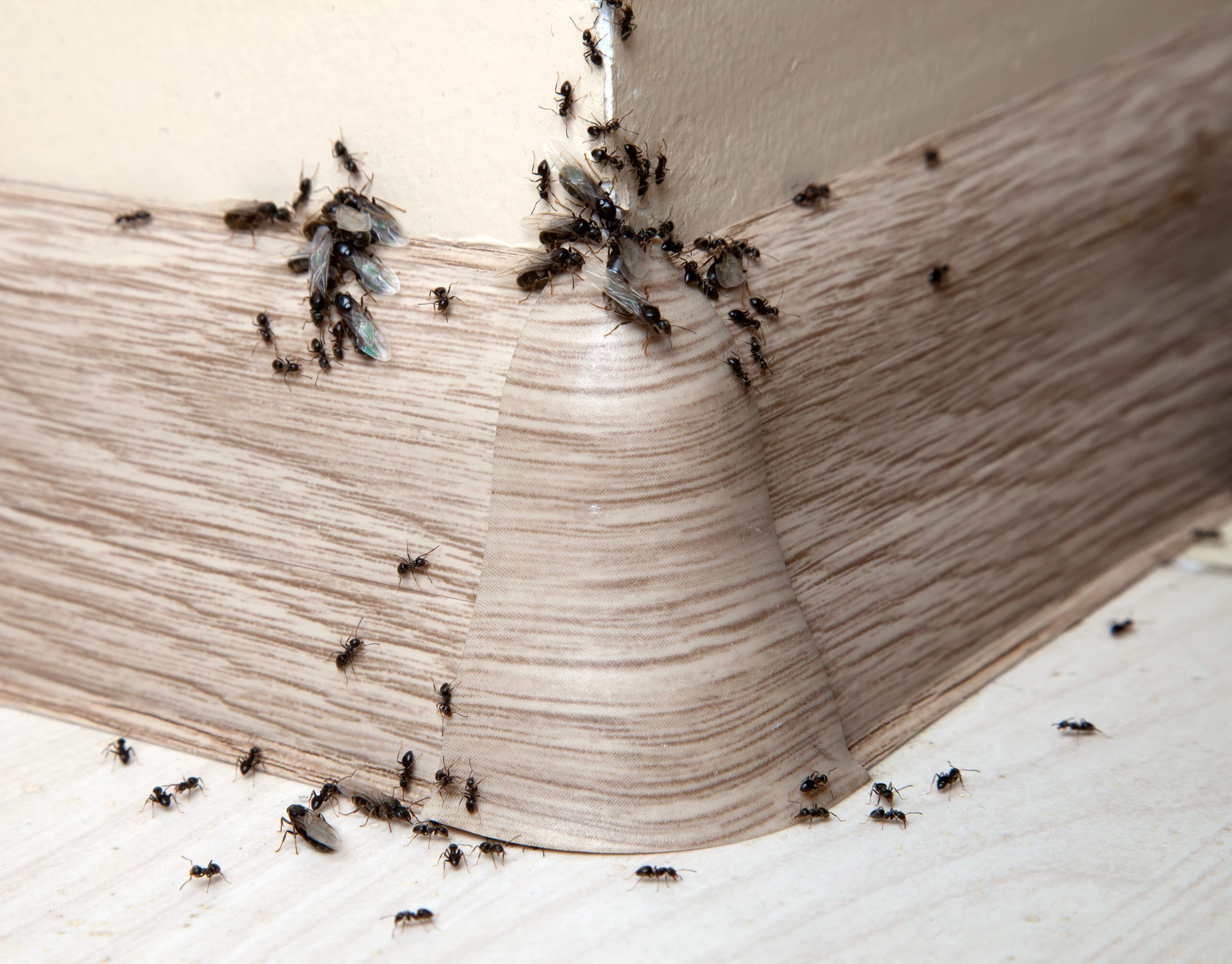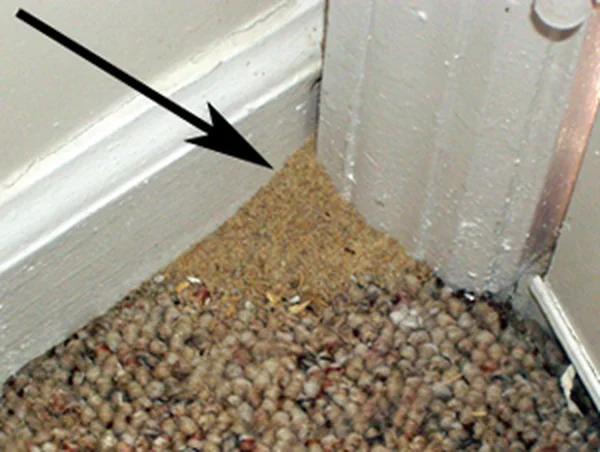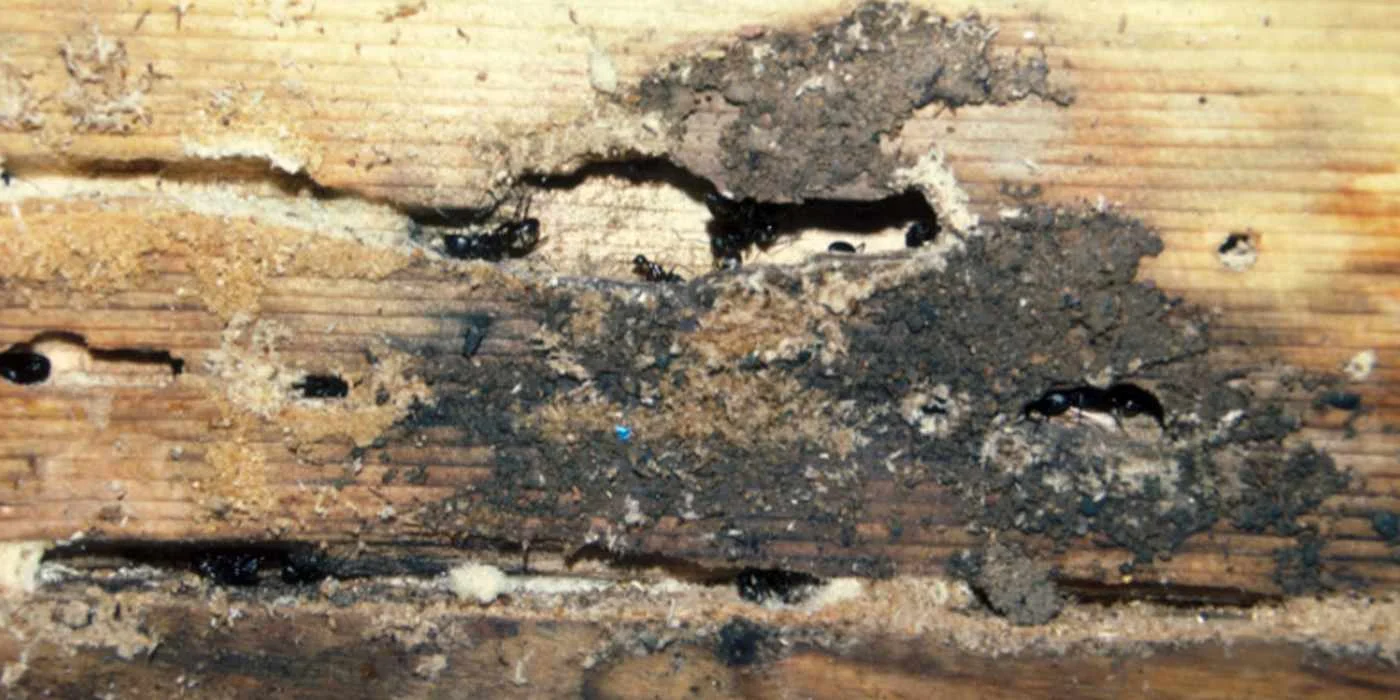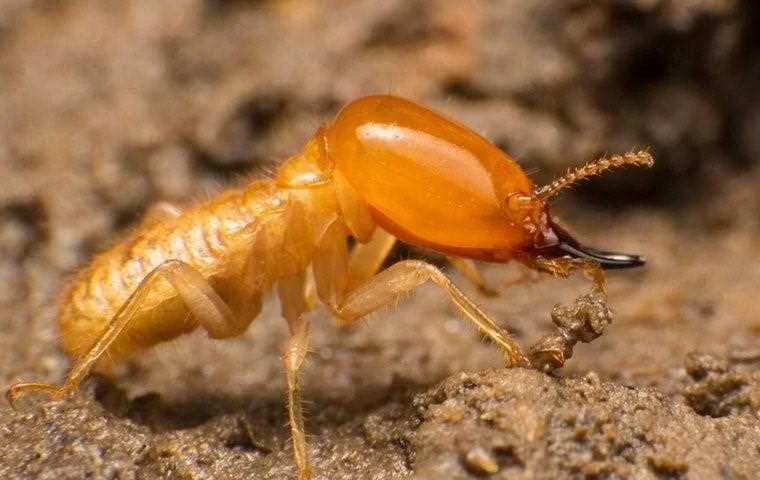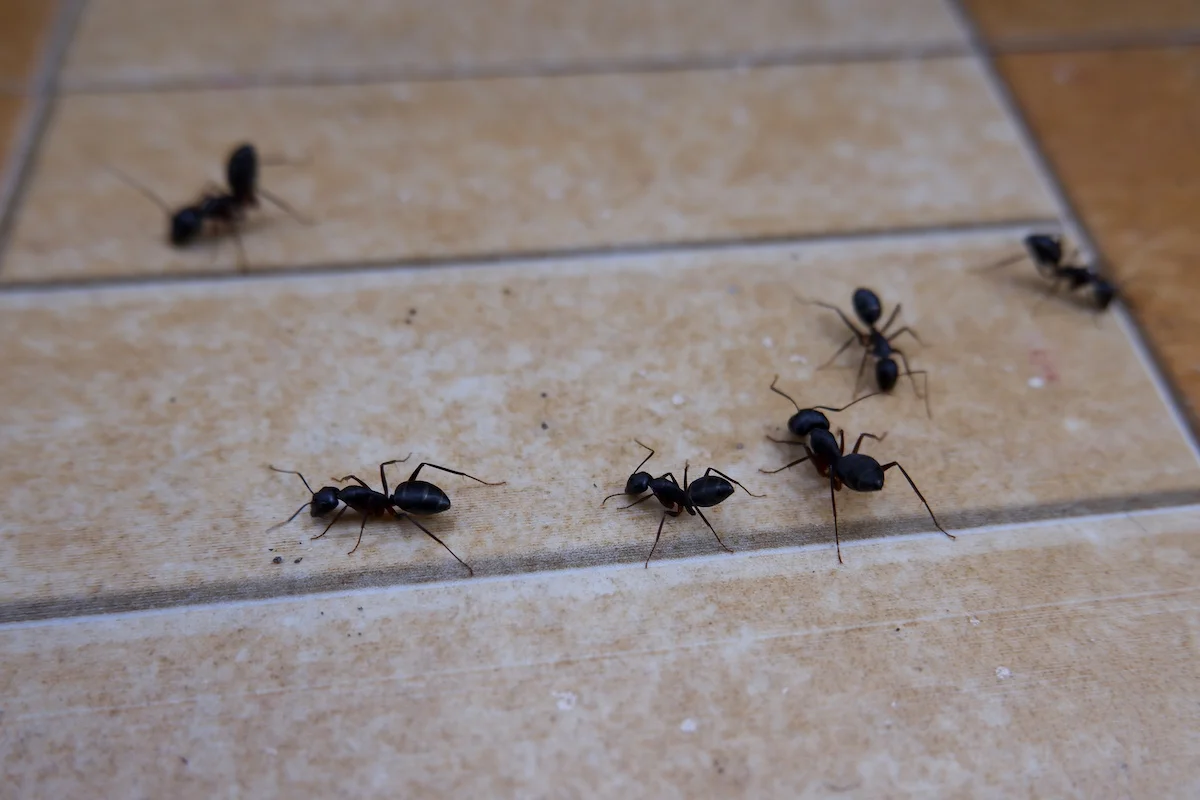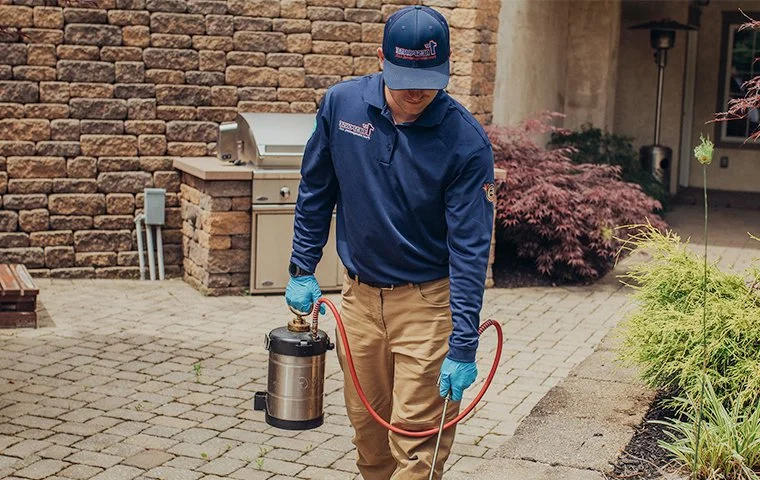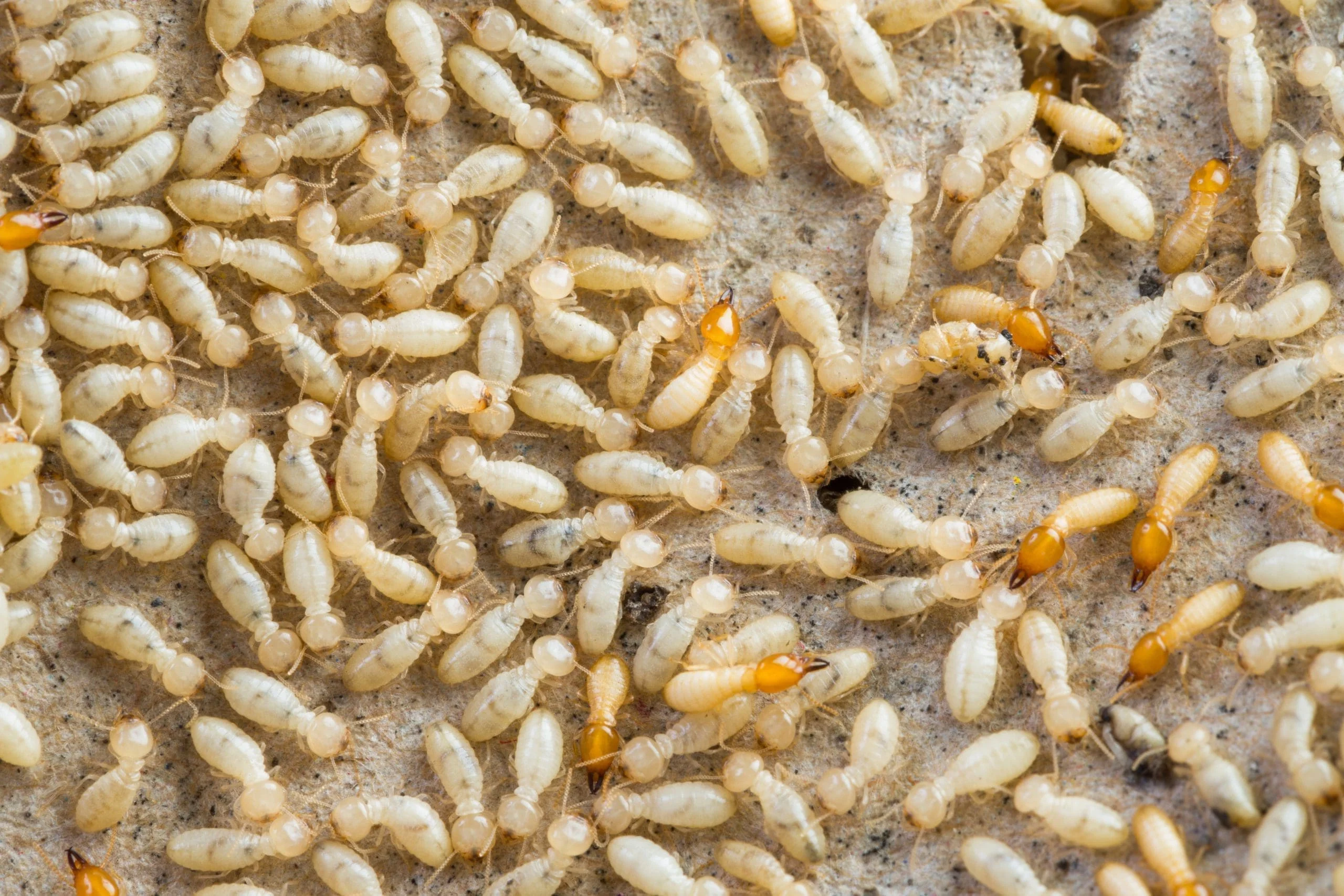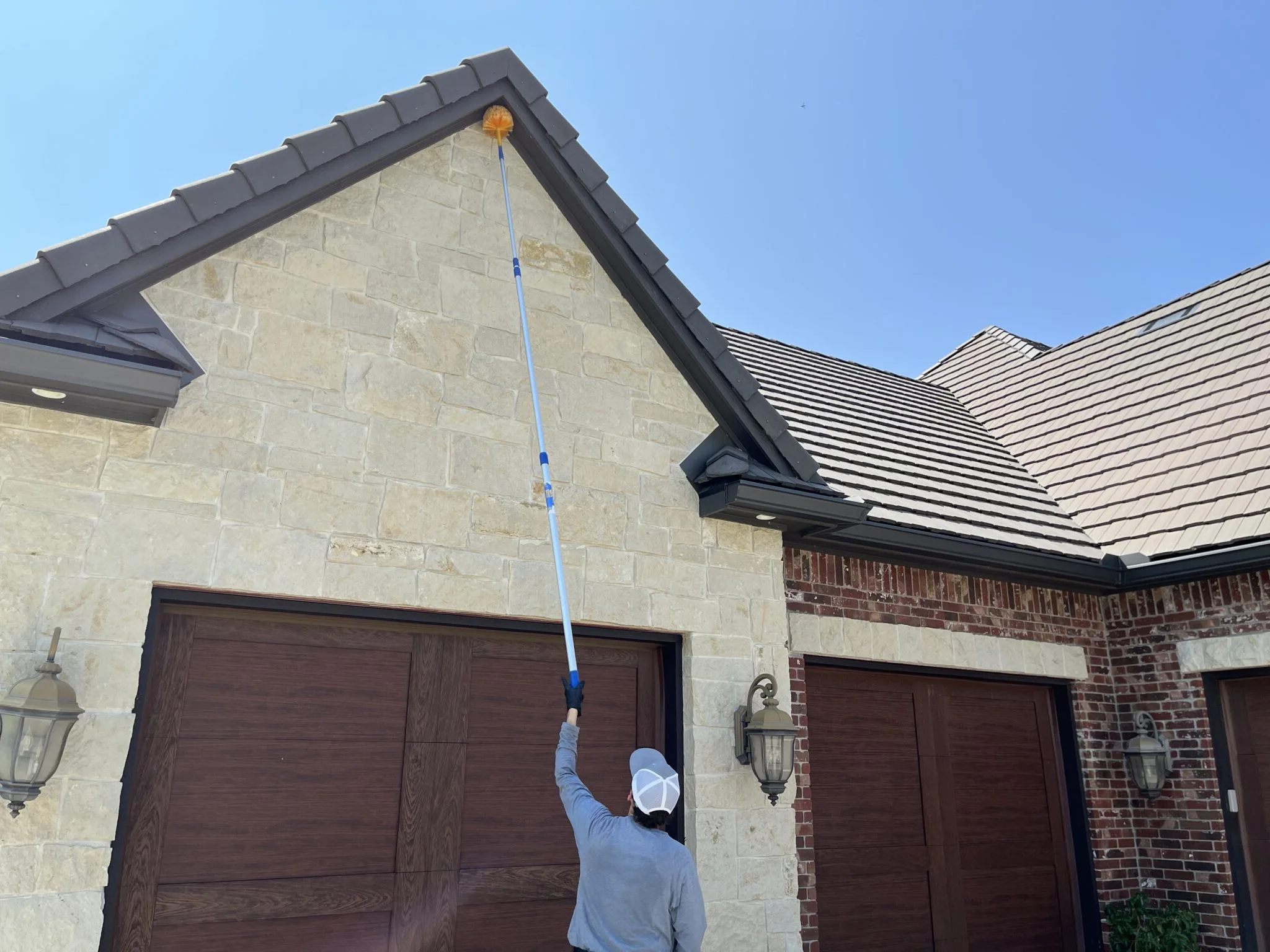Ants are among the most common household pests, with over 12,000 species worldwide and dozens that regularly invade homes and businesses. These highly organized social insects can establish expansive colonies containing thousands of individuals, with satellite nests that make complete elimination challenging without professional intervention. While some species are merely a nuisance, others can damage property, contaminate food, deliver painful stings, or even compromise structural integrity. Ant control requires understanding their complex colony structures and behaviors to effectively eliminate existing problems and prevent future invasions.
This comprehensive guide explores common ant species, their behaviors, the challenges they present, and how professional ant extermination services can effectively protect your property. Whether you're dealing with persistent kitchen invaders, aggressive fire ants in your yard, or wood-destroying carpenter ants, understanding these resilient pests is the first step toward reclaiming your space from unwanted ant colonies.
Dealing with persistent ants? Our professional ant control experts can target the entire colony, not just the visible workers.
Contact us today for fast, effective ant elimination!
Common Ant Species
Different ant species present unique challenges for control. Identifying the specific species is crucial for effective treatment, as behaviors, nesting habits, and appropriate control strategies vary significantly:
Carpenter Ants
Carpenter ant excavating galleries in wood
Carpenter ants (Camponotus spp.) are among the largest ants in North America and a primary concern for property owners.
Key Characteristics:
- Appearance: Large (1/4 to 1/2 inch), typically black or red and black; workers within the same colony vary in size
- Habitat: Nest in moist or decaying wood, creating smooth tunnels and galleries; unlike termites, they excavate wood but don't consume it
- Signs: Frass (wood shavings mixed with insect parts) pushed out of galleries; rustling sounds within walls; winged reproductives (swarmers) emerging in spring
- Damage: Can cause significant structural damage over time, though slower than termites; typically target moisture-damaged wood
- Behavior: Nocturnal foragers that establish satellite colonies; main colonies often located outside in tree stumps or landscape timbers
Carpenter ant infestations require thorough inspection and treatment, as their nests can be difficult to locate and they commonly establish multiple satellite colonies throughout a structure. Professional ant control addresses both the parent and satellite colonies for effective elimination.
Fire Ants
Fire ants (Solenopsis invicta) are aggressive invasive pests known for their painful stings and persistent colonies.
Key Characteristics:
- Appearance: Reddish-brown to reddish-black, 1/8 to 1/4 inch long; distinctive mounds in landscapes
- Habitat: Build large mounds in sunny, open areas; also nest under rocks, around tree roots, and occasionally invade buildings
- Threat: Deliver painful stings that create burning sensation and pustules; can sting repeatedly when disturbed
- Colony Structure: Large colonies with 100,000+ workers and multiple queens, making elimination difficult
- Spread: New colonies form when queens and workers float to new locations during floods; also spread through transported soil and nursery stock
Fire ant control requires specialized treatments targeting both foraging workers and queens. Their aggressive nature and medical significance—particularly for allergic individuals—make professional intervention especially important for fire ant management.
Distinctive fire ant mound in residential lawn
Odorous House Ants
Odorous house ants foraging for sweet foods
Odorous house ants (Tapinoma sessile) are one of the most common household ant pests in many regions.
Key Characteristics:
- Appearance: Small (1/8 inch), dark brown to black; emit a distinctive rotten coconut or blue cheese odor when crushed
- Habitat: Highly adaptable, nesting indoors in wall voids and under floors, or outdoors under objects or in soil
- Food Preference: Strong attraction to sweet foods and honeydew produced by aphids
- Colony Structure: Multiple queens and satellite colonies; colonies merge and separate depending on conditions
- Behavior: Form distinct trails; quickly relocate nests when disturbed; populations surge during warm, wet weather
Odorous house ants present control challenges due to their multiple nesting sites and ability to quickly relocate when disturbed. Their attraction to moisture often brings them into kitchens and bathrooms, making thorough sanitation an important component of management.
Pavement Ants
Pavement ants (Tetramorium caespitum) are common urban pests that frequently establish colonies under sidewalks, driveways, and building foundations.
Key Characteristics:
- Appearance: Small (1/8 inch), dark brown to black with parallel grooves on head and thorax; small soil mounds around pavement cracks
- Habitat: Nest under pavement, stones, and along building foundations; occasionally move indoors during winter
- Diet: Omnivorous, consuming insects, seeds, honeydew, and a wide variety of human foods
- Behavior: Territorial wars between colonies create piles of dead ants; slow-moving with well-defined trails
- Seasonality: Swarmers (winged reproductives) emerge in spring and summer, often alarmingly
Pavement ants typically enter buildings at ground level, following pipes and wires. While they don't cause structural damage, their persistent foraging for food and tendency to establish large colonies make them a common nuisance requiring professional ant control measures.
Pavement ants emerging from cracks in concrete
Pharaoh Ants
Pharaoh ants (Monomorium pharaonis) are tiny but problematic pests, particularly in healthcare facilities, multi-unit housing, and food processing facilities.
-
Appearance: Extremely small (1/16 inch), light yellow to red with darker abdomen; difficult to see without close inspection
-
Nesting Habits: Create small colonies in inaccessible, hidden areas near heat and moisture sources; often within wall voids, behind baseboards, or in electrical outlets
-
Colony Structure: Multiple queens and satellite colonies; respond to control attempts by "budding"—fragmenting into new colonies when disturbed
-
Health Concerns: Can transmit pathogenic bacteria in healthcare settings; capable of seeking out and contaminating sterile environments
-
Control Challenges: Traditional repellent insecticides worsen infestations by triggering colony budding; require specialized bait treatments
Pharaoh ants present significant control challenges due to their tiny size, hidden nesting habits, and tendency to split into multiple colonies when disturbed. Their medical significance in healthcare settings makes professional management particularly important.
Other Ant Species
Argentine ants forming characteristic foraging trail
Depending on your location, you may encounter other significant ant species:
- Argentine Ants: Invasive species forming massive supercolonies with multiple queens; create distinctive foraging trails and displace native ant species
- Crazy Ants: Named for their erratic movement patterns; newer invasive species that can short-circuit electronics and displace other ant species, including fire ants
- Acrobat Ants: Raise their heart-shaped abdomens when disturbed; often nest in moisture-damaged wood and insulation
- Harvester Ants: Large, red ants that clear vegetation around their colonies; deliver painful stings but generally stay outdoors
- Leafcutter Ants: In southern regions, these ants cut and process vegetation to grow fungal gardens; can defoliate plants and trees
Regional variations in ant species require targeted control strategies. Our ant control specialists identify the specific species on your property and implement appropriate treatment protocols based on their biology and behavior.
Correct Identification is Crucial
Proper ant identification drives effective treatment strategies. Different species have distinct behaviors, food preferences, nesting habitats, and colony structures that significantly impact control approaches. For example, moisture-loving carpenter ants require different treatments than sweet-seeking odorous house ants, while pharaoh ants require non-repellent approaches to prevent colony splitting. Our technicians are trained to identify specific ant species and implement targeted treatments accordingly.
Ant Biology & Behavior
Understanding ant biology and behavior provides insight into why these pests are so persistent and how to effectively control them:
Ant colony showing worker ants tending to larvae and queen
Colony Structure
Ant colonies operate as superorganisms with specialized members performing distinct roles:
- Queens: Reproductive females responsible for egg production; some species have single queens while others maintain multiple queens
- Workers: Sterile females that gather food, care for young, defend the colony, and expand the nest; often vary in size within the same species
- Reproductives (Alates): Winged males and females that emerge during mating seasons; males die after mating while females shed wings and establish new colonies
- Soldiers: In some species, specialized larger workers with enlarged heads and mandibles for colony defense
- Brood: Eggs, larvae, and pupae that require constant care from workers
This complex social structure explains why killing visible foraging ants rarely solves an infestation. Effective ant control must target the reproductive members—particularly the queens—to eliminate the entire colony.
Communication Systems
Ants employ sophisticated communication methods that influence their behavior and control challenges:
-
Pheromone Trails: Chemical signals deposited by foraging ants guide others to food sources; stronger trails develop as more ants follow the same path
-
Tactile Communication: Physical contact and antennation (touching antennae) transmit information between colony members
-
Alarm Pheromones: Released when ants are disturbed or threatened, triggering defensive responses from nearby colony members
-
Queen Pheromones: Regulate worker behavior and reproduction within the colony; prevent workers from developing into reproductive females
-
Recognition Signals: Allow ants to identify nestmates and detect intruders through colony-specific chemical signatures
Understanding these communication systems has revolutionized ant control, with modern baiting strategies leveraging pheromone trails to deliver control agents back to the colony center.
Foraging Patterns
Ant foraging behaviors influence when and where they're encountered in buildings:
- Trail Establishment: Scout ants locate food sources and establish chemical trails for other workers to follow
- Resource Allocation: Colonies adjust foraging patterns based on food source quality, distance, and colony needs
- Seasonal Variations: Most species increase activity in spring and summer; some alter food preferences seasonally
- Distance Traveled: Foraging distances vary by species; carpenter ants may travel up to 100 yards from nests, while smaller species typically stay within 30 feet
- Environmental Factors: Temperature, humidity, and time of day significantly impact foraging activity
These foraging patterns explain why ant activity often changes with seasons and weather conditions, and why complete ant extermination requires understanding the specific species' habits and needs.
Ants following established pheromone trail to food source
Nesting Behaviors
Ant nesting preferences vary widely by species and influence control approaches:
-
Soil Nesters: Many species construct underground chambers connected by tunnels; often visible as mounds (fire ants) or small soil piles (pavement ants)
-
Wood Nesters: Carpenter ants excavate galleries in wood, particularly when moisture-damaged; other species occupy existing wood cavities
-
Opportunistic Nesters: Species like pharaoh ants and odorous house ants establish colonies in small, protected spaces including wall voids, behind baseboards, and inside electrical outlets
-
Satellite Colonies: Many species establish secondary nests connected to the main colony, often without queens but containing workers and brood
-
Seasonal Relocation: Some colonies move their nests in response to environmental conditions, such as flooding or temperature changes
These diverse nesting behaviors require different treatment approaches. Professional ant control technicians locate and target both primary and satellite nests for comprehensive elimination.
The Danger of Partial Treatment
Understanding ant biology explains why many do-it-yourself control attempts fail. Killing visible foraging workers—which represent only 5-10% of the colony—doesn't affect the queen's ability to produce replacements. Some species, like pharaoh ants, respond to disturbance by splitting into multiple colonies, potentially worsening infestations. Effective control requires strategies that reach the reproductive members of the colony while accounting for species-specific behaviors.
Ant Problems & Risks
While some ant species are merely a nuisance, others pose significant risks to health, property, and comfort:
Structural damage from carpenter ant excavation
Property Damage
Several ant species can cause significant property damage:
- Carpenter Ant Damage: Excavate galleries in wood for nesting, compromising structural elements over time; particularly target moisture-damaged wood
- Electrical Damage: Some species, particularly crazy ants, nest in electrical equipment and can cause short circuits and equipment failures
- Landscape Damage: Fire ants, harvester ants, and leafcutter ants can damage lawns, gardens, and ornamental plants through their nesting and foraging activities
- Insulation Damage: Certain species nest in and damage building insulation, reducing energy efficiency
- Moisture Issues: Ant activity in walls sometimes indicates existing moisture problems that can lead to further damage if not addressed
The economic impact of ant damage extends beyond repair costs to include decreased property values, particularly in cases of carpenter ant or fire ant infestations.
Health Concerns
Ants can pose various health risks depending on species:
-
Stings and Bites: Fire ants deliver painful stings that cause burning sensations and pustules; reactions can be severe in sensitive or allergic individuals
-
Allergic Reactions: Proteins in ant venom can trigger allergic responses ranging from localized swelling to anaphylaxis in sensitized individuals
-
Pathogen Transmission: Some species, particularly pharaoh ants, can mechanically transmit bacteria in sensitive environments like hospitals
-
Food Contamination: Foraging ants can contaminate food with bacteria from previous feeding sites, including waste and decaying materials
-
Psychological Impact: Persistent infestations can cause stress, sleep disruption, and anxiety, particularly when ants invade bedrooms and living areas
While most ant species don't present serious health threats, those with allergies to insect venom should be particularly cautious around fire ants and other stinging species.
Food Contamination
Ant infestations frequently impact food safety and quality:
- Pantry Invasions: Many household ant species target stored foods, particularly those containing sugars, proteins, or oils
- Cross-Contamination: Foraging ants travel between unsanitary areas and food preparation surfaces, potentially transferring bacteria
- Commercial Impact: Businesses facing ant infestations risk regulatory violations, reputation damage, and potential shutdowns
- Food Waste: Contaminated food products typically require disposal, creating economic losses
- Recurring Problems: Food contamination creates cycles of attraction as food residues continue to draw ants to the same areas
In commercial food handling environments, ant infestations are particularly problematic due to strict regulatory requirements and the potential for widespread contamination.
Ants contaminating food sources in kitchen
Nuisance Impact
Even when not causing damage or health issues, ant infestations create significant nuisance problems:
-
Persistent Presence: Continuing intrusions despite cleaning efforts; appearing suddenly in large numbers
-
Seasonal Swarms: Alarming emergence of winged reproductive ants, often mistaken for termites, during mating seasons
-
Nighttime Disturbances: Certain species, like carpenter ants, are most active at night, creating disturbing noises or unexpected encounters
-
Outdoor Enjoyment: Fire ant mounds and aggressive species can limit landscape use and outdoor activities
-
Social Embarrassment: Visible ant activity during social gatherings or in front of guests creates discomfort for property owners
While sometimes dismissed as "just ants," these persistent invaders can significantly impact quality of life and property enjoyment when infestations remain unaddressed.
Environmental Benefits of Ants
While controlling problematic infestations is necessary, it's worth noting that ants play valuable ecological roles in outdoor environments. They aerate soil, disperse seeds, control other insect populations, and serve as food sources for many wildlife species. Professional ant control focuses on managing problematic infestations while minimizing impact on beneficial outdoor populations. This targeted approach addresses pest issues while respecting ants' important environmental functions.
Don't let ant infestations threaten your property and peace of mind! Our ant extermination experts target colonies at their source.
Schedule a service today for comprehensive ant elimination!
Signs of Ant Infestation
Recognizing the signs of ant activity helps identify problems early before they escalate:
Distinctive ant trail indicating established infestation
Visual Evidence
- Live Ants: The most obvious sign; patterns of activity provide clues about colony location and species
- Long trails indicate established colonies with reliable food sources
- Scattered individual ants may represent early investigation of new territory
- Large numbers appearing suddenly often follow discovery of food by scout ants
- Ant Trails: Visible pathways along baseboards, countertops, or foundations as ants follow pheromone markers
- Nesting Materials: Small piles of soil, wood shavings, or debris pushed out from nests; fine sawdust-like material (frass) from carpenter ant galleries
- Swarmers: Sudden appearance of winged reproductive ants, often near windows or light sources during mating seasons
- Soil Mounds: Distinctive outdoor formations, particularly prominent with fire ants and pavement ants
Structural Evidence
Certain ant species leave telltale signs of their presence in buildings:
-
Wood Damage: Smooth galleries and tunnels in wood created by carpenter ants; often accompanied by ejected frass
-
Soil Pushing: Soil or debris appearing from cracks in foundations, sidewalks, or pavement from nesting activities below
-
Wall Disturbances: Soil or material appearing from electrical outlets or small holes in drywall
-
Hollow Sounds: Tapping on wooden elements may produce hollow sounds if carpenter ants have created extensive galleries
-
Moisture Damage: Water-damaged wood often correlates with carpenter ant activity, as they prefer moist, partially decayed wood
These structural signs often indicate more extensive infestations and may require professional assessment to determine the full extent of the problem.
Behavioral Indicators
Ant behavior provides valuable diagnostic information:
- Consistent Pathways: Repeated ant activity along the same routes, particularly along structural elements like baseboards or pipes
- Activity Patterns: Timing of ant appearance can indicate species; carpenter ants are primarily nocturnal, while many household species are active during daylight hours
- Food Preferences: Attraction to specific foods helps identify species; sweet foods attract odorous house ants while protein and grease attract fire ants and pavement ants
- Response to Disturbance: Behavior when disturbed varies by species; fire ants become aggressive, while others scatter or retreat
- Seasonal Patterns: Sudden appearances during specific weather conditions, such as after rain or during hot, dry periods
Professional ant control technicians observe these behavioral patterns to help identify species and locate colonies, improving treatment effectiveness.
Professional inspection identifies ant behavior patterns
Sound Evidence
In quiet environments, some ant infestations can be detected by sound:
-
Rustling Noises: Particularly with carpenter ants, a faint rustling sound within walls or wooden elements as they move through galleries
-
Crinkling Sounds: Sounds resembling crumpling cellophane or paper when colonies are active within walls
-
Tapping Responses: Increased activity sounds after tapping near suspected nests, as worker ants respond to perceived threats
-
Nocturnal Activity: Sounds most noticeable at night when buildings are quiet and carpenter ants are most active
-
Location Patterns: Sounds typically more prominent near moisture sources or where pipes enter walls
These sound indicators are particularly valuable for detecting carpenter ant infestations in wall voids, ceilings, or structural wood that isn't visibly accessible.
Indoor vs. Outdoor Signs
Ant activity indoors doesn't always indicate indoor nesting. Many species establish primary colonies outdoors but forage indoors for food and water. This distinction matters for treatment—controlling outdoor colonies may be necessary to resolve indoor activity. Professional inspection considers both indoor and outdoor evidence to determine colony locations and appropriate treatment strategies. For example, carpenter ants typically maintain parent colonies outdoors while establishing satellite nests within structures, requiring comprehensive treatment of both areas.
Professional Ant Control Methods
Effective ant management requires a comprehensive approach addressing current infestations while preventing future problems. Professional ant extermination employs multiple strategies tailored to your specific situation:
Inspection & Identification
Thorough inspection forms the foundation of effective ant control
Every effective ant control program begins with a comprehensive property assessment:
- Species Identification: Determining the exact ant species present, as control strategies vary significantly by species
- Colony Locating: Tracking ant trails to identify nest locations, including outdoor primary colonies and indoor satellite nests
- Structural Examination: Identifying entry points, travel routes, and conditions conducive to ant activity
- Moisture Assessment: Evaluating moisture issues that attract certain species, particularly carpenter ants
- Food Source Identification: Locating attractants that support ant populations, from kitchens to pet feeding areas
This detailed assessment process allows for targeted treatment strategies addressing the specific ant species, colony locations, and contributing factors unique to your property.
Targeted Baiting Strategies
Baiting leverages ant foraging behavior to deliver control agents to the colony center:
- Customized Bait Selection: Choosing appropriate bait formulations based on species food preferences and seasonal feeding patterns
- Protein/oil-based baits for fire ants, pavement ants, and many carpenter ants
- Sugar-based baits for sweet-feeding species like odorous house ants and pharaoh ants
- Liquid, gel, or granular formulations based on species preferences and location
- Strategic Placement: Positioning baits along established foraging trails and near entry points to maximize discovery
- Colony Elimination: Slow-acting active ingredients allow foraging ants to carry bait back to the colony and share with queens and larvae
- Non-Repellent Approach: Using formulations that don't repel ants, allowing continued feeding until colony collapse
- Monitoring & Adjustment: Regularly assessing bait consumption and colony response, adjusting strategies as needed
Professional baiting programs target the reproductive core of colonies, eliminating queens and brood rather than just addressing visible foraging workers.
Strategic bait placement along established ant trails
Barrier Treatments
Targeted applications create zones that exclude ants from structures:
-
Perimeter Treatments: Application of residual insecticides around building foundations to prevent ant entry
-
Entry Point Focus: Targeted treatment of doors, windows, utility penetrations, and other common entry areas
-
Non-Repellent Products: Modern formulations that ants cannot detect, allowing them to contact and transfer the material to nestmates
-
Crack and Crevice Applications: Precision treatment of specific structural gaps where ants travel or nest
-
Granular Applications: Broadcast treatments for lawn areas with fire ant or pavement ant activity
These barrier treatments complement baiting strategies by preventing new colonies from establishing while existing colonies are being eliminated through baiting.
Direct Nest Treatments
Direct treatment of fire ant mound in residential lawn
When nests are accessible, direct treatment provides immediate results:
- Mound Treatments: Directly applying liquid, dust, or granular formulations to visible ant mounds, particularly effective for fire ants
- Void Treatments: Injecting dusts or aerosols into wall voids, behind baseboards, or into wood galleries where ants are nesting
- Outdoor Colony Treatments: Targeting parent colonies in landscape features, tree stumps, or soil to address the source of indoor invaders
- Foam Applications: Using specialized foam formulations to reach deep into wall voids and wood galleries where carpenter ants nest
- Spot Treatments: Applying residual products to specific harborage areas identified during inspection
Direct nest treatments are particularly important for species like carpenter ants and fire ants where colony elimination is essential to prevent structural damage or stinging risks.
Habitat Modification
Altering the environment to make it less conducive to ant activity:
-
Moisture Management: Addressing leaks, drainage issues, and excess humidity that attract moisture-seeking ant species
-
Vegetation Management: Trimming trees and shrubs away from structures to eliminate "bridges" that allow ants to access buildings
-
Mulch Adjustment: Maintaining proper mulch depth and keeping it pulled back from foundations to reduce nesting opportunities
-
Structural Repairs: Replacing moisture-damaged wood that attracts carpenter ants; sealing cracks and gaps in foundations
-
Food Source Elimination: Improving sanitation, food storage, and waste management to reduce attractants
These modifications address the underlying conditions that support ant populations, creating a less hospitable environment for future infestations.
Ongoing Prevention
Comprehensive ant management includes ongoing protection:
- Maintenance Treatments: Scheduled preventive services maintaining protective barriers before problems develop
- Seasonal Targeting: Timing treatments to coincide with periods of increased ant activity based on species and regional patterns
- Monitoring Systems: Regular property inspections to detect new activity before infestations establish
- Client Education: Providing actionable recommendations for reducing attractants and access points
- Follow-Up Services: Responsive treatment adjustments based on changing conditions or activity patterns
This proactive approach prevents the establishment of new colonies while maintaining protection against seasonal ant pressure, providing continuous protection rather than responding to recurring problems.
Preventive treatments maintain long-term ant protection
Integrated Pest Management (IPM) Approach
Our ant control programs follow IPM principles, combining multiple control strategies while minimizing environmental impact. This comprehensive approach addresses both immediate infestation concerns and underlying factors, creating sustainable solutions rather than temporary fixes. By addressing ant biology, behavior, and habitat requirements, IPM creates long-term protection while reducing reliance on chemical treatments. This balanced approach is particularly valuable for properties with children, pets, or environmental sensitivities.
Our professional ant control experts combine multiple strategies for comprehensive protection against these persistent pests.
Contact us today for a customized ant management plan!
DIY vs. Professional Ant Control
While many homeowners attempt do-it-yourself ant control, there are significant differences between DIY approaches and professional services:
| Consideration |
DIY Approach |
Professional Service |
| Species Knowledge |
Limited ability to distinguish between similar-appearing species with different control requirements
|
Expert identification of specific ant species, enabling targeted treatments based on biology and behavior
|
| Colony Targeting |
Typically addresses only visible foraging ants rather than locating and treating nests; may trigger colony budding
|
Identifies and targets actual colony locations, including parent and satellite nests, addressing the source of the problem
|
| Product Selection |
Limited to consumer-grade products that may repel rather than eliminate; improper selection can worsen problems
|
Access to professional-grade products including non-repellent formulations and specialized baits unavailable to consumers
|
| Treatment Strategy |
Often reactive, treating visible ants without addressing underlying causes; frequently relies on repellent products
|
Comprehensive approach combining baiting, barrier treatments, direct nest applications, and habitat modification
|
| Long-term Results |
Typically provides temporary suppression rather than colony elimination; problems often return
|
Targets colony elimination and implements preventive measures for lasting protection against reinfestation
|
| Time & Convenience |
Requires ongoing time investment for repeated applications; trial-and-error approach extends elimination timeline
|
Efficient service by trained professionals; systematic approach shortens elimination timeline with minimal homeowner time investment
|
| Safety & Precision |
Risk of improper application or product selection; potential for overuse in accessible areas
|
Precise application by trained technicians with proper equipment; targeted treatments that maximize efficacy while minimizing exposure
|
Professional services utilize specialized equipment and expertise
When to Call Professionals
While minor, isolated ant activity might be addressable with DIY methods, professional ant extermination is recommended in these situations:
- Persistent Problems: Ant activity that continues despite DIY treatment attempts
- Carpenter Ant Infestations: Signs of carpenter ants in structural wood, particularly when accompanied by moisture issues
- Fire Ant Colonies: Multiple fire ant mounds, especially in yards where children or pets play
- Hard-to-Control Species: Infestations of pharaoh ants, odorous house ants, or other species known for colony budding when disturbed
- Commercial Settings: Food service, healthcare, schools, or multi-unit housing where comprehensive management is essential
Professional ant control offers comprehensive, efficient solutions that not only address current problems but prevent future ones, often proving more cost-effective than repeated DIY treatments for established infestations.
Ant Prevention Tips
While professional services provide the most comprehensive protection, these preventive measures can help minimize ant problems:
Food Management
Proper food handling is essential for ant prevention:
- Kitchen Practices:
- Store foods in airtight containers, particularly sweets, proteins, and oils
- Clean up spills and crumbs immediately
- Regularly clean under and behind refrigerators and stoves
- Empty trash frequently, using containers with tight-fitting lids
- Pet Food Management:
- Avoid leaving pet food out continuously, particularly overnight
- Use ant-proof pet food dishes with moats or petroleum jelly barriers
- Store bulk pet food in sealed containers rather than original packaging
- Outdoor Considerations:
- Clean outdoor eating areas promptly after use
- Keep grills and BBQ areas clean and free of grease
- Manage fruit trees by promptly removing fallen fruit
These food management practices eliminate the primary attractants that draw ants to buildings, significantly reducing invasion risk.
Proper food storage prevents ant attraction
Moisture Control
Managing moisture helps prevent many ant species, particularly carpenter ants:
-
Plumbing Maintenance: Promptly repair leaky pipes, faucets, and fixtures that provide water sources for ants
-
Drainage Improvements: Ensure proper drainage around foundations to prevent soil nests and moisture accumulation
-
Roof and Gutter Maintenance: Keep gutters clean and address roof leaks that may create conducive conditions in attics
-
Ventilation: Maintain adequate ventilation in crawl spaces, attics, and other enclosed areas to prevent moisture accumulation
-
Wood Protection: Address wood that contacts soil; maintain proper clearance between wood elements and ground
These moisture management practices are particularly important for preventing carpenter ant infestations, as they target moisture-damaged wood for nesting.
Exclusion Techniques
Sealing potential entry points prevents ant access
Physical barriers help prevent ant entry:
- Seal Entry Points: Caulk or seal cracks in foundations, gaps around windows and doors, and utility penetrations
- Weather Stripping: Install or repair door sweeps and weather stripping to eliminate gaps
- Screen Maintenance: Repair damaged window and vent screens that may allow ant entry
- Tree Management: Trim tree branches and shrubs that contact buildings and provide "bridges" for ants
- Foundation Perimeter: Create a gravel or stone barrier around foundations to discourage nesting near structures
These exclusion measures create physical barriers to ant entry, making it more difficult for scouts to discover indoor food and water sources.
Landscape Management
Outdoor practices significantly impact ant pressure on structures:
-
Mulch Management: Maintain moderate mulch depth (2-3 inches) and keep mulch pulled back from foundations
-
Plant Selection: Minimize plants that attract honeydew-producing insects like aphids, which in turn attract ants
-
Vegetation Clearance: Maintain a vegetation-free perimeter around foundations where possible
-
Firewood Storage: Store firewood away from structures and elevated off the ground to prevent nesting
-
Yard Waste: Promptly remove yard debris, fallen logs, and stumps that provide nesting sites
Thoughtful landscape practices reduce outdoor nesting opportunities near structures, decreasing the likelihood of indoor invasion from established exterior colonies.
Seasonal Prevention
Ant prevention should adapt to seasonal patterns. In spring, focus on exterior exclusion as colonies become active after winter. Summer requires diligent food management as foraging activity peaks. Fall is ideal for addressing structural issues before ants seek winter shelter. Year-round vigilance is necessary, but timing preventive efforts to coincide with natural ant cycles maximizes effectiveness. Professional ant control programs incorporate these seasonal considerations into comprehensive management plans.
Frequently Asked Questions
Why do I suddenly have ants when my home is clean?
Even impeccably clean homes can experience ant invasions for several reasons. Ants are primarily seeking water, shelter, and food—and "food" can include microscopic residues invisible to the human eye. Weather changes often trigger ant movement; during droughts, ants seek water sources indoors, while heavy rains may flood outdoor colonies, forcing them to relocate. Seasonal patterns also influence ant behavior, with spring typically bringing increased foraging activity.
Additionally, new colonies establish each year as reproductive ants start nests, expanding territorial range. Your home's location may be a factor if it's built near established outdoor colonies or in an area with high ant pressure. Sometimes, neighbors' pest control efforts can inadvertently drive ants to adjacent properties. Finally, the smallest entry points—gaps you might not even notice—can allow scout ants to discover attractive indoor conditions. Professional inspection can identify these subtle factors that cleaning alone can't address.
How can I tell if I have carpenter ants or termites?
Distinguishing between carpenter ants and termites is crucial as they require different treatment approaches. Look for these key differences:
- Body Shape: Carpenter ants have distinct constricted waists and elbowed antennae, while termites have straight bodies without narrow waistlines and straight beaded antennae
- Wings (on reproductives): Carpenter ant wings are unequal in length with the front pair longer than the rear; termite wings are equal in length and about twice as long as their body
- Wood Damage: Carpenter ants excavate wood to create nests, leaving smooth, sandpapered-like galleries often containing sawdust-like material mixed with insect parts (frass); termites actually consume wood, creating rough galleries filled with soil and fecal material (mud-like)
- Activity Patterns: Carpenter ants are frequently visible, especially at night; termites avoid light and are rarely seen unless their nest is disturbed
- Evidence: Carpenter ants push frass out of their galleries, creating visible piles; termites typically don't leave visible debris
If you're uncertain, our professionals can provide definitive identification and appropriate treatment recommendations. Both pests require prompt attention, as they can cause significant structural damage if left unaddressed.
How long does professional ant treatment take to work?
The timeline for effective ant control varies based on several factors:
- Species: Different ant species respond to treatment at different rates; pharaoh ants and odorous house ants often require more time than pavement ants
- Colony Size and Structure: Larger colonies with multiple queens typically take longer to eliminate than smaller, simpler colonies
- Treatment Method: Direct nest treatments may show immediate results, while baiting strategies require time for foragers to carry material back to the colony
- Season and Weather: Ant activity and bait acceptance vary based on seasonal patterns and environmental conditions
- Property Characteristics: Structural complexity, landscape features, and neighboring properties influence treatment timelines
Typically, you'll notice significant activity reduction within 3-7 days after initial treatment. Complete control of established infestations generally requires 2-3 weeks for most species, though carpenter ants and pharaoh ants may require 4-8 weeks for complete elimination. Our service includes follow-up visits to monitor progress and adjust strategies as needed. We'll provide specific timeline expectations based on your particular situation during the initial assessment.
Are professional ant treatments safe for homes with children and pets?
Our professional ant control treatments are designed with family safety as a priority. We employ several approaches to ensure effective treatment while maintaining household safety:
- Targeted Application: Products are precisely applied to areas where ants travel and nest, minimizing exposure in general living spaces
- Baiting Emphasis: Baiting systems use minimal amounts of active ingredients contained in secured stations or applied in inaccessible locations
- Product Selection: We select formulations appropriate for your specific environment, using products with lower toxicity profiles in homes with children and pets
- Exterior Focus: When possible, we emphasize exterior treatments to address colonies before they enter your home
- Safety Protocols: Clear instructions regarding treatment preparation, reentry times, and post-treatment precautions ensure family safety
During your initial consultation, please inform us about children, pets, or individuals with health concerns in your home. This allows us to customize our approach for your specific situation, balancing effective ant elimination with appropriate safety considerations. We're happy to discuss specific concerns and provide detailed information about the products and methods we recommend.
Why do store-bought ant sprays seem to make the problem worse?
This common experience occurs for several important biological reasons:
- Colony Budding: Many ant species, particularly pharaoh ants and odorous house ants, respond to chemical threats by splitting into multiple smaller colonies—a survival mechanism called "budding" that actually increases the overall infestation
- Repellent Properties: Most consumer sprays have repellent properties that may kill visible ants but alert the colony to danger, causing them to avoid treated areas and find new pathways into your home
- Surface-Only Treatment: Over-the-counter products typically affect only the ants you see (representing just 5-10% of the colony), while queens continue producing replacements
- Pheromone Disruption: Sprays disrupt trail pheromones temporarily, but when they dissipate, multiple new trails may form as ants seek alternative routes
- Inadequate Coverage: Consumer products rarely reach nest locations, leaving the reproductive heart of the colony untouched
Professional ant control utilizes non-repellent formulations and baiting strategies that work with ant behaviors rather than against them. By allowing foragers to continue normal patterns, these approaches enable ants to carry control materials back to the colony center, reaching queens and developing brood for comprehensive elimination rather than merely temporary suppression.
What Our Clients Say
"After battling carpenter ants for two years with various DIY products, we finally called PestControl100. Their technician found the parent colony in a tree stump we didn't even know was a problem. Six months later, we're still ant-free. Wish we'd called them first instead of wasting money on products that didn't work!"
- Thomas R., Homeowner
★★★★★
"We had a terrible fire ant problem in our yard that made it impossible for our kids to play safely. The PestControl100 team not only eliminated the existing mounds but set up a maintenance program that has kept our yard fire ant free for over a year. Their knowledge about different ant species really made the difference."
- Sarah L., Family of Four
★★★★★
"As a restaurant owner, even minor ant problems can create major issues with health inspections. PestControl100 created a comprehensive program for our property that addressed both interior and exterior ant pressures. Their discrete, after-hours service ensures our customers never see treatments taking place. Outstanding service and results!"
- Miguel A., Restaurant Owner
★★★★★


